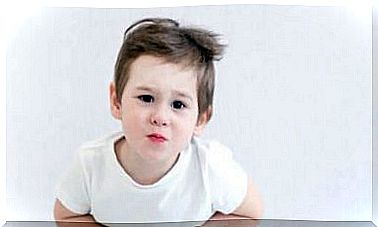Selective Eating Disorder

Selective eating disorder is a mental health disorder. A person develops it when there is no variety of foods in their regular diet. There is also a rejection of the incorporation of new foods.
In order to be diagnosed as a disorder, the person must have eaten less than ten different foods in total considering their entire diet for at least two years.
If these criteria are met, we will talk about this pathology. The Diagnostic and Statistical Manual of Mental Disorders includes it as a disease with its English name: Avoidant/Restrictive Food Intake Disorder (ARFIV).
Selective eating disorder and its relationship with other syndromes
Selective eating disorder can be the gateway to other eating disorders, such as:
- Anorexia : weight loss caused by the patient, even if he/she has low body weight. It is generated by an excessive fear of weight gain.
- Bulimia : is the succession of impulsive behaviors called binge eating , consisting of an exaggerated consumption of food in a short time, and then expelling them through unnatural mechanisms, such as induced vomiting.
- Orthorexia : is the obsession with consuming only foods considered healthy by the patient, at an irrational level, worrying all the time about the menu.
- Vigorexia : is the pathological obsession with maintaining a muscular body. To achieve this, people suffering from this disease exercise excessively and alter their diet to the extreme.
Who is affected by selective eating disorder?
Although the disorder can appear at any age of life and affect any human being, it has more susceptible populations. The two groups most affected are children and athletes . Let’s take a look at each of them.
Children and selective eating disorder

Parents know that promoting good eating habits in their children is not easy. In children, there is a situation called food neophobia : the fear of trying new foods .
It all goes together: specific food selection, neophobia and loss of appetite. This is usually observed between the ages of two and six years . And it is normal for it to be like this: it is part of the growth and development process.
Adults must understand that this process is expected in preschool age. Anyway, when it gets extreme, we can talk about selective eating disorder. The prevalence of this syndrome among children under six years of age is estimated at around 15%.
It is more common among girls than among boys. For every boy who suffers from the disorder, there are about four girls with the syndrome.
The long-term problem is that the situation can persist into adulthood. Parents become persistent with counterproductive incorporation. Children enter a circle of anxiety, which further stimulates the pathology.
The presence of selective eating disorder in childhood has been associated with certain personality characteristics that would persist into adulthood:
- social fear
- Little adaptation to change
- Obsessive-Compulsive Disorders
- Anxiety
Selective Eating Disorder in Athletes
When those who play sports become professional or practice them more and more often, they run the risk of becoming obsessed. This obsession can become evident in diet design.
If the athlete just wants to increase muscle volume or maximize performance at any cost, he will change the diet. In some cases the diet is consciously altered, when preparing for a competition, for example. Other times, there is supervision by a nutrition professional, but not always.
Protein-based diets are common among athletes . Lack of variety forces the body to work metabolically in atypical ways. This is harmful in the long term and can generate metabolic pathologies that will become evident over the years.

Its consequences
The lack of nutrients is something serious for the human body. Macronutrients and micronutrients are essential for body cells and tissues to work, develop, grow and repair.
Minor deficiencies can affect the healing process, for example. In growing children there will not necessarily be low weight, but there may be short stature associated with the deficit.
Children’s nervous systems are particularly sensitive to the syndrome. There can be a substantial difference in IQ between children with the syndrome and those who do not. Obviously, school performance is affected.
Nor is the social interference that the disturbance generates. People with selective eating disorder avoid participating in social events where there is food , for example. They know they will be exposed in these situations. For this reason, they increasingly withdraw and remain in solitude for longer, making the possibilities of outside help more difficult.
Treatment
When the syndrome develops, the good intentions of those closest to you are not enough to reverse the situation. Possibly they will fail if there is no proper advice.
This is a mental health disorder and as such requires professionals in this field. It is often a combination of disorders. Consultation with psychologists or psychiatrists is essential to diagnose and treat the condition.









